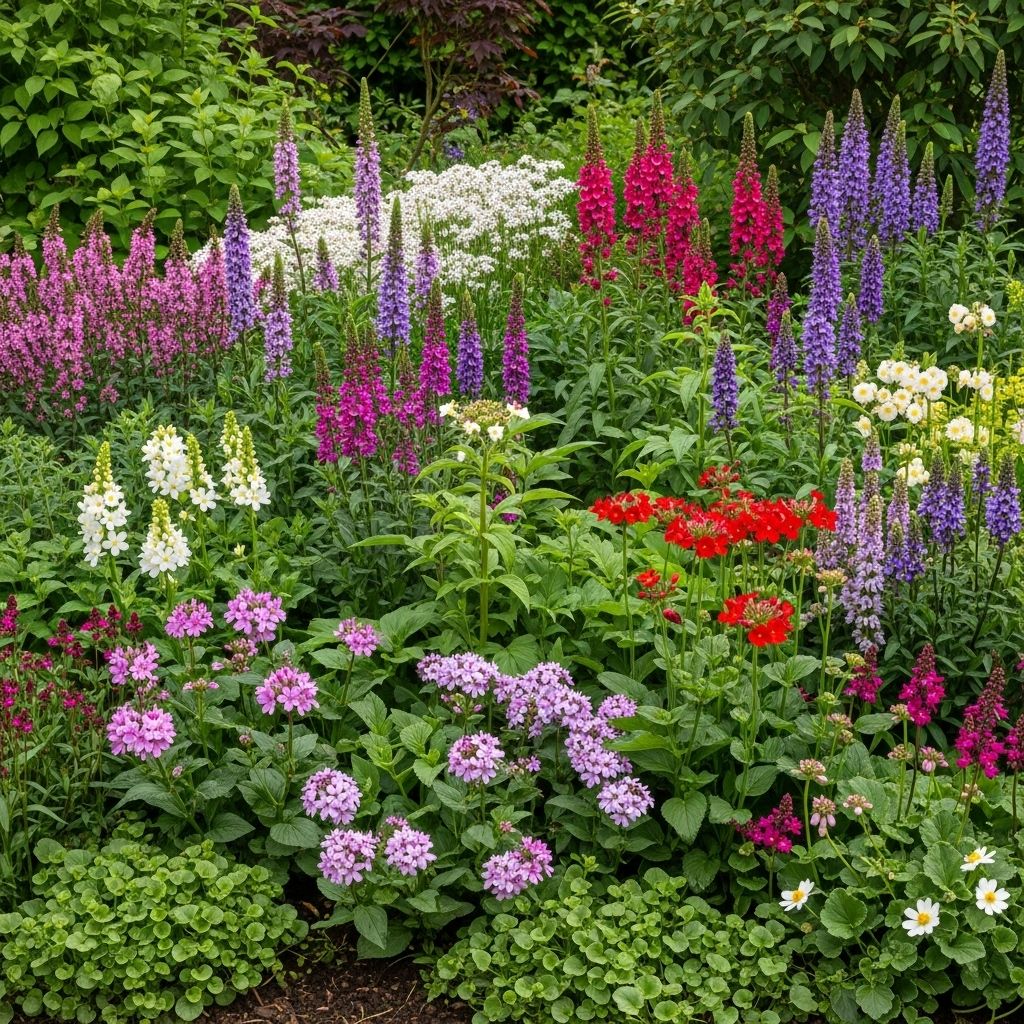13 Irish Plants to Brighten Your Garden
Explore lush greenery and folklore-rich blooms to elevate your outdoor sanctuary.

Image: HearthJunction Design Team
Introduction to Irish Plants
Irish plants are not only beautiful but also steeped in history and folklore, making them a wonderful addition to any garden. Whether you’re looking to celebrate Saint Patrick’s Day or simply want to infuse your outdoor space with a bit of Irish charm, these plants are sure to delight. In this article, we’ll explore some of the most striking Irish-inspired plants that will bring a touch of the Emerald Isle to your garden.
1. Bells of Ireland
Bells of Ireland, scientifically known as Moluccella laevis, are a striking choice for any garden. Despite their name, they are not native to Ireland but originate from Asia and Ukraine. These plants are known for their tall bloom spikes adorned with green bells, which contain tiny white flowers. They thrive in full sun and can grow up to 2-3 feet tall, making them an excellent choice for adding a dramatic touch to your garden.
2. Foxglove
Foxglove, with its tall spikes of colorful flowers, is a classic addition to many gardens. It is a favorite of bees and butterflies, making it an excellent choice for wildlife-friendly gardens. Foxglove is relatively easy to grow and can add a whimsical touch to your outdoor space.
3. Shasta Daisy
Shasta daisies are bright and cheerful, offering a simple yet effective way to add vibrancy to your garden. These daisies are easy to grow and require minimal maintenance, making them perfect for beginners.
4. Irish Moss
Irish moss, scientifically known as Sagina hawaiensis or Sagina subulata, is a versatile ground cover that can thrive in a variety of conditions. It produces tiny, star-shaped flowers and can be used between stepping stones or as a lawn substitute in some areas. However, it is considered invasive in certain regions, so it’s important to choose a non-invasive alternative if necessary.
Other Irish-Inspired Plants
Besides these plants, there are many other options that can bring a taste of Ireland to your garden. Consider plants with Irish names or those that reflect the lush green landscapes of the Emerald Isle. These include varieties like clover, which is rich in folklore, and wildflowers that bloom in the Irish countryside.
**Growing Irish Plants: Tips and Tricks**
Growing Irish plants can be a rewarding experience, but it requires some knowledge of their specific needs. Here are some tips to help you get started:
- Choose the Right Soil: Many Irish plants prefer well-draining soil. Ensure your soil is fertile and suitable for the specific plant type.
- Provide Adequate Sunlight: Most Irish plants thrive in full sun to partial shade, so choose a location that provides the right amount of sunlight for your chosen plants.
- Water Wisely: Irish plants generally require regular watering but dislike soggy conditions. Water them when the top inch of soil feels dry.
**Frequently Asked Questions (FAQs)**
Q: Are Bells of Ireland difficult to grow?
A: Bells of Ireland are relatively easy to grow, requiring full sun and basic care. They can be sensitive to root disturbance, so handle them gently when transplanting.
Q: Is Irish moss suitable for all climates?
A: Irish moss thrives in hardiness zones 4-8. It can be grown in a variety of conditions but may require protection in extreme climates.
**Conclusion**
Irish plants offer a unique blend of beauty and tradition, making them an excellent choice for any garden. Whether you’re celebrating Saint Patrick’s Day or simply looking to add some charm to your outdoor space, these plants are sure to delight.
References
Read full bio of Shinta












